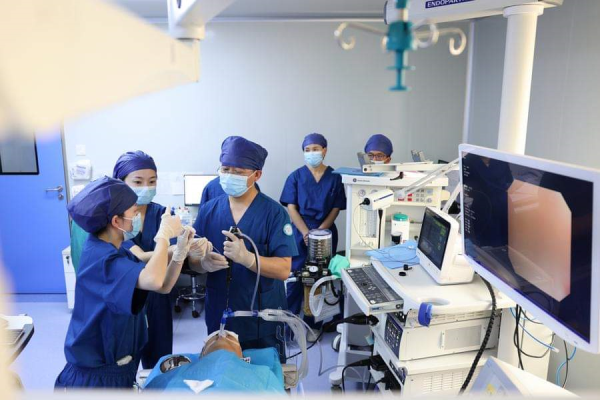ຂປລ
China's five-year cancer survival rate has steadily improved. Still, challenges remain as the country strives to address regional disparities in access to quality cancer prevention and treatment.

(Xinhua/KPL) -- China's five-year cancer survival rate has steadily improved. Still, challenges remain as the country strives to address regional disparities in access to quality cancer prevention and treatment.
The percentage of people surviving cancer for at least five years has risen from 40.5 percent in 2015 to 43.7 percent in 2022, according to data released by the National Cancer Center (NCC).
China's health authorities have outlined in an official cancer prevention and control action plan (2023-2030) that the five-year cancer survival rate target will be further raised to a minimum of 46.6 percent by 2030.
The country has developed a cancer screening model covering multiple cancer types to enhance prevention and enable early detection and treatment.
According to monitoring data from 2000 to 2018, the age-standardized incidence and mortality rates of esophageal and gastric cancers prevalent within the Chinese population have steadily decreased. Experts attribute this decline to the expanded adoption of upper gastrointestinal cancer screening.
Cervical and breast cancer are among the most significant threats to women's health in China. Since introducing a nationwide screening initiative in 2009, an increasing number of women have reaped its benefits.
According to the latest data from the National Health Commission (NHC), more than 280 million free cervical cancer screenings have been conducted, resulting in the detection of 902,000 cases of cancer and precancerous lesions.
However, cancer screening still faces challenges, including uneven accessibility and substandard screening quality. Some doctors in community hospitals and rural clinics lack specialized training in early cancer diagnosis, which increases the risk of misdiagnosis and missed cases.
In response, the NCC has led the development of screening and early diagnosis guidelines for seven common cancers, including lung and stomach cancer. These guidelines aim to improve screening and early intervention while reducing disparities.
Reducing cancer incidence and mortality requires both effective prevention and standardized treatment.
While some county-level hospitals have added oncology and radiotherapy departments, they still struggle with meeting necessary diagnostic and treatment standards.
To address this gap, cancer treatment capabilities in primary healthcare institutions should be strengthened through technical support, talent development and remote consultations to enable the sharing of medical resources, said Liu Jinfeng, deputy head of the NHC.
KPL